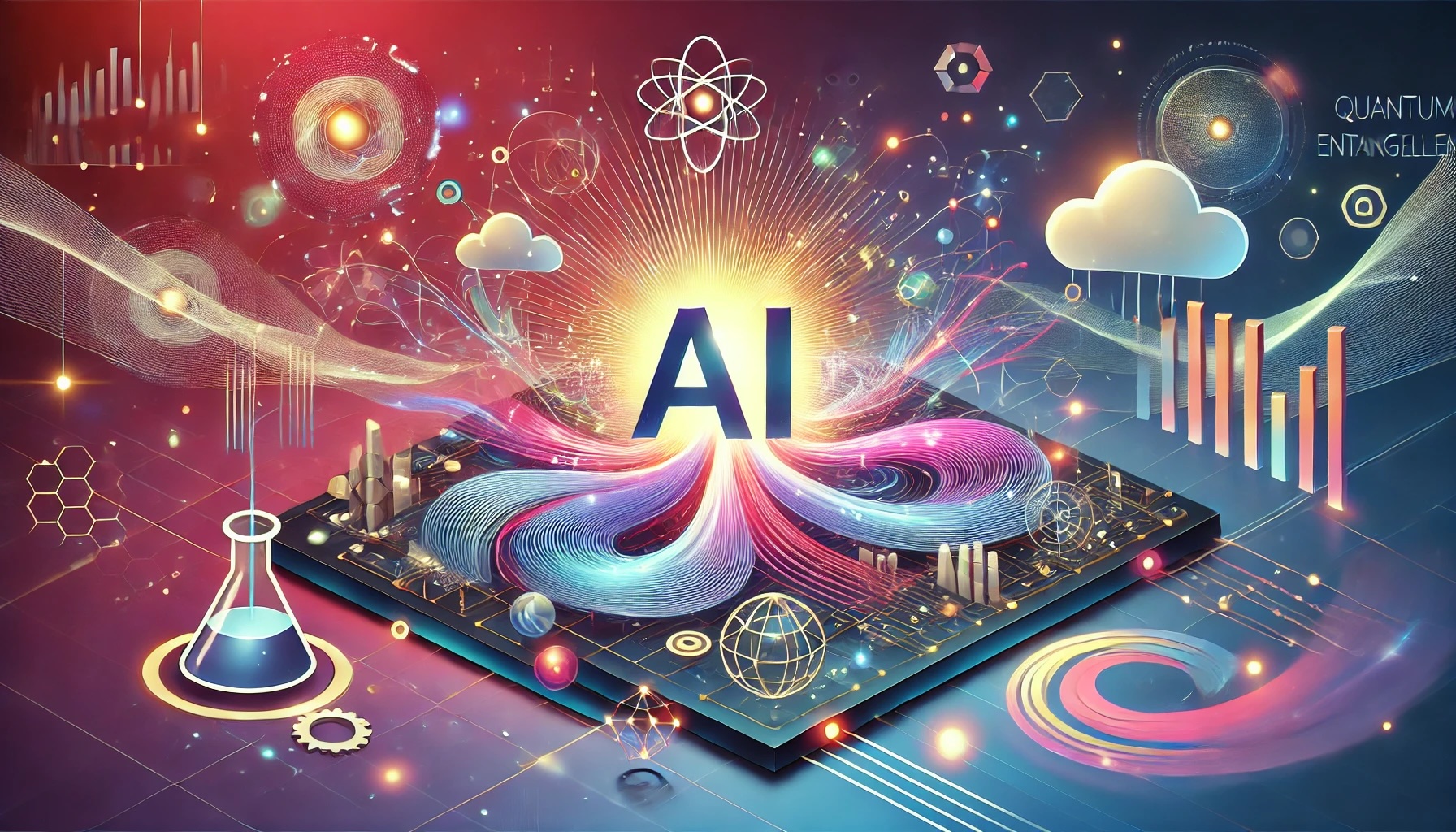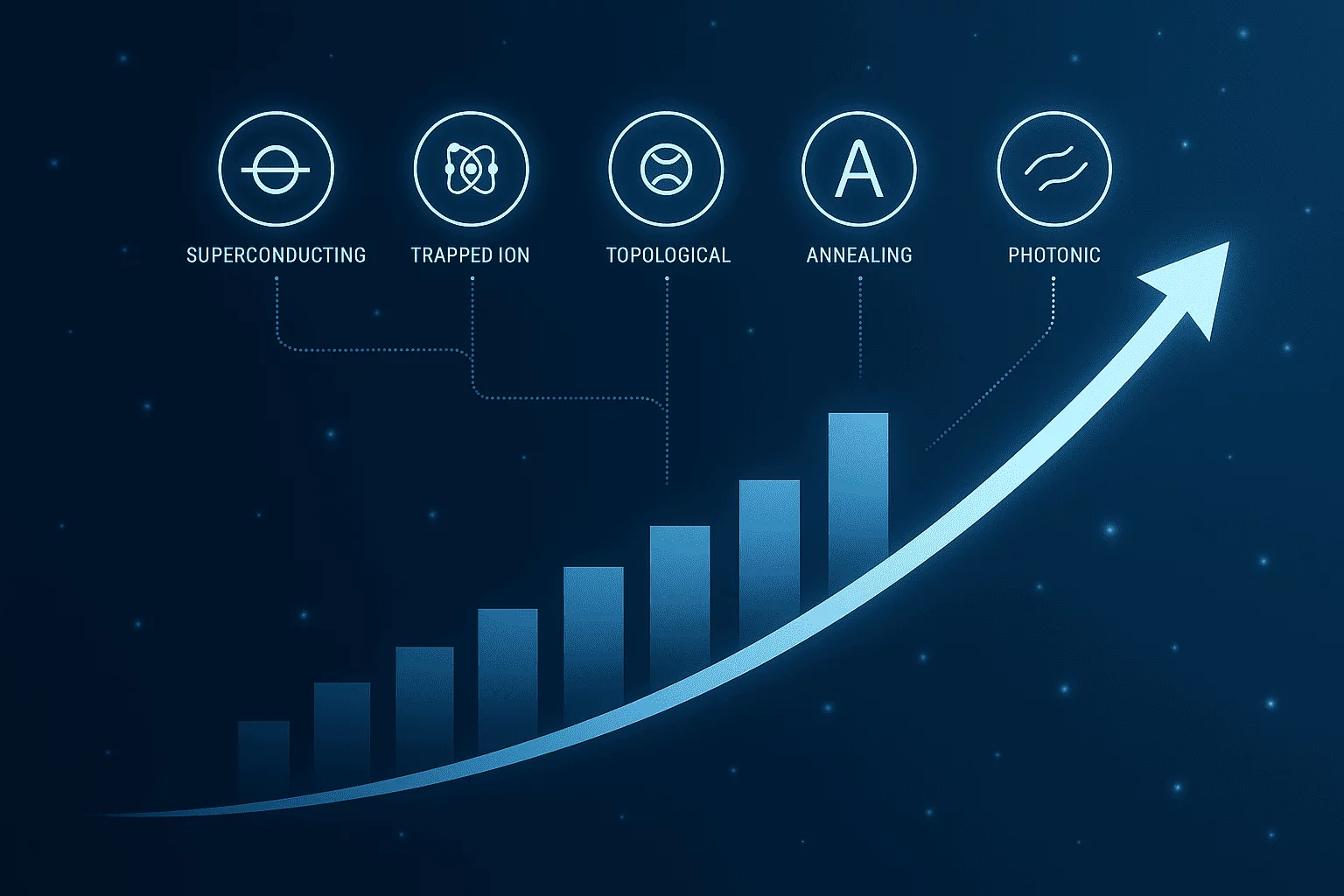Rare earth elements (REEs) are the unsung heroes of modern technology—vital to everything from smartphones and electric vehicles to wind turbines and defense systems. But extracting and refining these materials comes at a steep cost: not just financially, but environmentally. Discover how quantum-enhanced AI is transforming rare earth element mining—boosting efficiency, reducing environmental harm, and supporting sustainable procurement.
As demand skyrockets, the mining industry faces two urgent challenges: improving efficiency in locating and processing REEs, and minimizing the environmental damage traditionally associated with their extraction. Enter quantum-enhanced AI—a fusion of quantum computing and artificial intelligence that promises to solve problems once thought computationally intractable.
In 2025, we stand at the cusp of a mining revolution, where entangled intelligence can guide us to richer deposits, cleaner operations, and more sustainable supply chains. This blog explores how quantum AI could optimize REE mining, delves into real use cases, and closes with strategic insights from Mattias Knutsson, a leading voice in global procurement and sustainability.
Why Rare Earth Elements Matter More Than Ever
Strategic Materials in a High-Tech World
REEs such as neodymium, praseodymium, and dysprosium are crucial for:
- High-performance magnets in EV motors and wind turbines
- Laser systems, radar, and night vision equipment
- Screens, speakers, and batteries in smartphones and laptops
Global demand is projected to grow over 400% by 2035, driven by the green energy transition and rising electronics consumption.
A Risky and Polluting Process
Unfortunately, REE extraction and separation is anything but clean:
- 1 ton of REEs = up to 2,000 tons of toxic waste
- High energy usage and solvent-heavy processes
- Acidic tailings and groundwater contamination in extraction zones
More than 85% of REE processing capacity resides in China, creating geopolitical supply vulnerabilities.
Quantum-enhanced AI offers a way forward—by improving the precision of resource targeting and the efficiency of downstream processing.
Quantum AI: What It Is and Why It’s a Game-Changer
A New Computational Paradigm
Quantum computing leverages qubits to model complex systems exponentially faster than classical computers. When combined with AI, quantum-enhanced algorithms can:
- Navigate vast solution spaces faster
- Model quantum chemistry of REE separation molecules
- Identify patterns in noisy, multidimensional geospatial datasets
Key Capabilities for Mining
- Exploration Prediction Models: Pinpoint optimal mining sites with greater accuracy
- Materials Science Simulations: Model solvent interactions and separations in quantum chemistry
- Environmental Forecasting: Predict impacts using quantum simulators for ecology
Use Case 1: Quantum AI for Locating High-Yield Extraction Sites
The Challenge
Traditional geological surveys can take years and still miss promising deposits. Satellite data, seismic readings, and soil composition models are vast and difficult to correlate accurately.
Quantum Solution
Quantum-enhanced machine learning models—such as quantum SVMs (support vector machines) and hybrid quantum–classical neural networks—can process satellite, mineralogical, and climate datasets to:
- Identify unseen spatial correlations
- Predict with ~30–40% more accuracy the locations of economically viable REE sites
Real-World Progress
- IBM’s Qiskit and NASA’s Earth Science program are collaborating on geo-optimization models
- Startup Zapata AI has developed quantum ML tools that process geospatial data up to 10x faster than traditional analytics
Use Case 2: Optimizing REE Processing Routes with Quantum Chemistry
The Challenge
Separation of REEs requires thousands of iterative solvent extraction cycles. Each cycle consumes chemicals and energy and produces waste.
Quantum Solution
Quantum chemistry simulations—especially using variational quantum eigensolvers (VQEs)—allow scientists to model molecular behavior of REEs within various solvents, predicting:
- Which ligand or membrane systems separate specific elements most efficiently
- How to reduce thermal energy consumption and chemical usage
Benefits
- Up to 50% fewer extraction stages
- Energy savings of 25–35% in purification
- Reduced volume of acidified waste per ton of REEs processed
Use Case 3: Environmental Impact Modeling with Quantum Simulators
The Challenge
Mining operations reshape ecosystems. Existing models struggle to simulate interdependent variables like rainfall, erosion, vegetation recovery, and biodiversity loss.
Quantum Solution
Quantum simulators are uniquely suited to model complex natural systems. In REE mining, they enable:
- Predictive erosion and watershed analysis
- Impact modeling of tailing storage and seepage risk
- Biodiversity modeling post-extraction
Case Study
- Google Quantum AI has piloted ecological modeling frameworks with entangled variable simulations to forecast forest recovery post-mining in tropical zones.
Integrating Entangled Intelligence into Real Supply Chains
A Procurement Shift
With predictive insights from quantum AI, procurement leaders can:
- Prioritize lower-impact suppliers
- Use predictive environmental scoring to shape sourcing criteria
- Benchmark mine performance with quantum-modeled efficiency and ESG scores
Circularity and Recycling
Quantum tools also aid in secondary sourcing by:
- Identifying recyclable REE streams in electronics
- Modeling recovery from tailings or phosphogypsum
- Optimizing logistics and energy for urban mining
Challenges to Watch
Despite exciting progress, barriers remain:
- Hardware limits: Most quantum processors remain below 100 qubits
- Data integration complexity: Merging classical and quantum datasets in production is still evolving
- Access inequality: High costs mean small nations and firms may lag
- Ethical concerns: Better tech does not replace the need for informed, community-led development
Strategic Insight: Mattias Knutsson on the Quantum Future of Resources
Mattias Knutsson, a leading voice in sustainable procurement and global supply strategies, sees quantum AI as both an enabler and a responsibility:
“Quantum intelligence gives us tools we’ve never had—but power must come with perspective. The rare earth revolution must empower communities and protect ecosystems as fiercely as it drives innovation.”
Knutsson’s recommendations for policymakers and businesses:
- Build public–private quantum innovation consortia
- Ensure equitable access to simulation platforms for emerging markets
- Tie quantum resource optimization to circular economy goals
- Establish global reporting norms on quantum-derived ESG performance
He concludes: “Let’s not just predict the best way to mine—let’s define the best reason to.”
Conclusion:
Rare earths are central to our future, but the way we extract and refine them must evolve. Quantum-enhanced AI represents a leap—not just in computation, but in conscious, data-driven stewardship.
Entangled Intelligence gives us an unprecedented opportunity: to predict, optimize, and protect. To balance the urgency of supply with the values of sustainability. And to do it transparently, with global collaboration and a deep respect for both science and society.
From the satellite to the sensor, from the soil to the circuit—quantum intelligence can help us mine smarter and live better.





